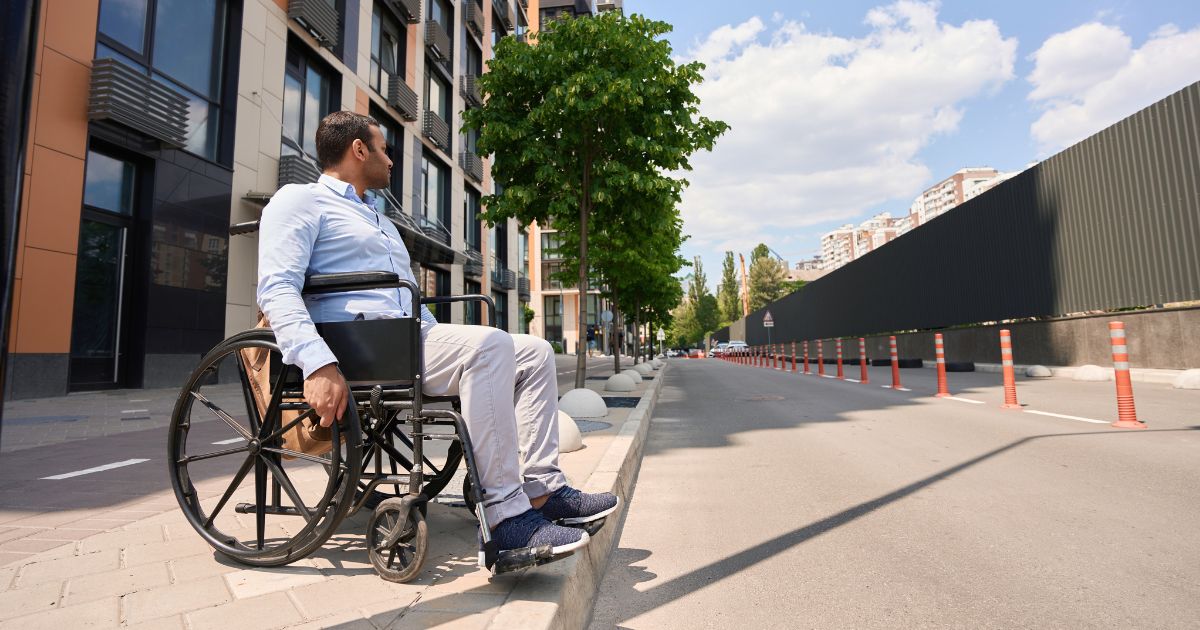
We have a sidewalk problem in America – missing and non-compliant sidewalks. Whether measured in miles or dollars, the numbers are enormous. Austin is missing 1,500 miles of compliant sidewalk, Boston lacks approximately 11,000 compliant curb ramps, Denver is missing 975 miles of compliant sidewalks. A study in Columbus, Ohio found that manual wheelchair users could access only one percent of their city sidewalks; while power wheelchair users could use only one quarter of sidewalks.
A Necessity for Disabled and Abled Alike
It’s an issue that impacts city transit riders and wheelchair users alike. Whether trying to catch a bus or simply cross the street, they face broken sidewalks, non-compliant or missing curb ramps, dangerous crossing areas, and the presence of scooters, cars, or other sidewalk blockages. Outside our city centers, the problem is more likely to be missing stretches of sidewalk that require riders to navigate dangerous conditions to reach bus stops, and that are completely out of reach of wheelchair users.
A Backlog of Work to be Done
Thirty-three years ago, the Americans with Disabilities Act (ADA) was signed into law. It specifically prohibited discrimination in transportation against disabled people. Unfortunately, three decades of inaction demonstrates that our cities haven’t prioritized accessible sidewalks for their citizens. It’s not surprising, really, given the costs of compliance. One Indianapolis study, for example, found that it would cost over one billion dollars to install missing sidewalks.
The Value of Sidewalks to Communities
Another way is to promote the value of sidewalks to communities. Studies have found that a 1-point increase in a neighborhood’s Walkability score translates to an average $3000 increase in property value. Sidewalks also provide a safety buffer from traffic, especially for children. What’s more, sidewalks offer a public space for interactions with neighbors – and these so-called weak social links deliver important economic and mental health benefits. There are also environmental and physical health benefits that accrue from sidewalks. Residents who have access to sidewalks tend to drive less and walk more.